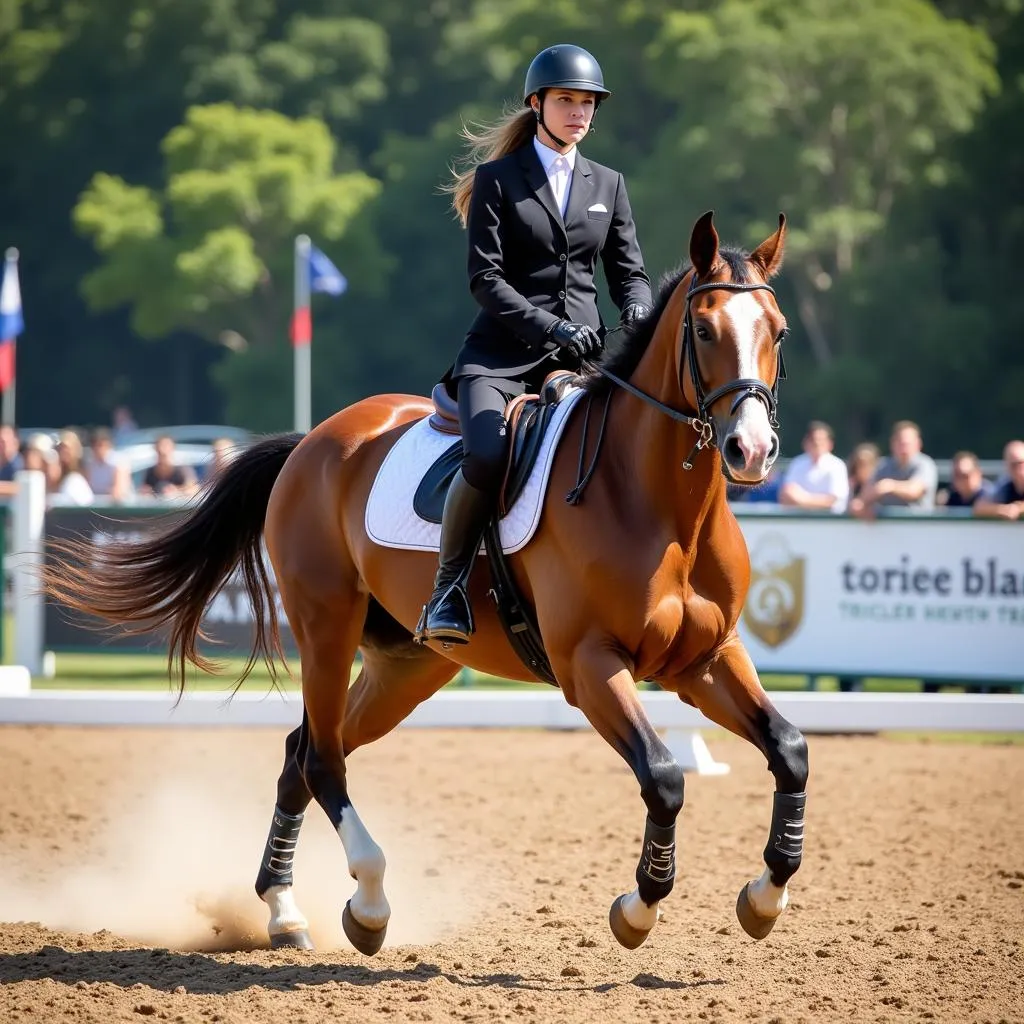Breaking in a horse, also known as starting a horse under saddle, is a significant milestone in a young horse’s life. It’s the process of transitioning them from being handled on the ground to accepting a rider and responding to cues. But “How Long Does It Take To Break In A Horse” is a question with a nuanced answer. While you might be eager to hop on and ride, the timeline for breaking in a horse is influenced by several factors, and rushing the process can have negative consequences.
Factors Influencing the Time to Break a Horse
There’s no magical formula to determine exactly how long it takes to break in a horse. Here are the key factors that play a role:
- Breed and Temperament: Some breeds are naturally calmer and quicker learners. A laid-back Quarter Horse might take to training faster than a more spirited Thoroughbred.
- Age and Maturity: While some horses are started at two years old, others might not be ready until they’re four or older. Physical and mental maturity are crucial for a safe and successful breaking process.
- Previous Handling: A horse that’s been regularly handled from a young age, with groundwork and desensitization, will generally adapt to being ridden quicker than one with limited handling.
- Training Method: Different trainers use different methods, some gentler and more gradual than others. A slow and methodical approach, emphasizing trust and understanding, will often take longer but lead to a more willing and reliable riding horse.
- Individual Horse: Just like people, horses learn at their own pace. Some horses might be naturals, while others require more time and patience.
Stages of Breaking in a Horse
While the time frame can vary, breaking in a horse typically involves these stages:
- Groundwork Fundamentals: Before getting on a horse’s back, a solid foundation of groundwork is essential. This includes teaching the horse to lead, stand, back up, and move away from pressure.
- Introduction to Tack: The horse is gradually introduced to the saddle, bridle, and other equipment. This often starts with laying a lightweight blanket over the horse’s back and progressing slowly to the saddle.
- Saddling and Bridling: The horse learns to accept the saddle and bridle comfortably. Positive reinforcement and patience are key in this stage.
- First Rides: The initial rides are usually short and focused on building the horse’s confidence. A trainer might start by riding the horse in a round pen or a controlled area.
- Developing Basic Responses: The horse learns to respond to basic aids, such as turning, stopping, and moving forward.
- Building Strength and Stamina: As the horse progresses, rides become longer, and the horse develops the physical strength and stamina required for riding.
Common Mistakes to Avoid
- Rushing the Process: Trying to progress too quickly can lead to fear, resistance, and potential safety issues.
- Inconsistent Handling: Horses thrive on routine and clear communication. Inconsistent cues or expectations can confuse the horse.
- Ignoring Signs of Stress: It’s crucial to recognize and address any signs of stress or discomfort in the horse.
- Lack of Professional Guidance: Seeking guidance from an experienced horse trainer, especially in the early stages, can make a significant difference in the horse’s long-term well-being and your safety.
How Long Does It Take to Break a Horse for Trail Riding?
If your goal is leisurely trail riding, the basic breaking-in process might take a few weeks to a couple of months. However, keep in mind that trail riding presents its own set of challenges and requires additional training. A horse needs to be comfortable with different terrain, obstacles, and being ridden in open spaces.
How Long to Break a Horse for Horse Show Name?
For disciplines like show jumping, dressage, or barrel racing, the training is significantly more specialized and demanding. These horses often undergo years of training to reach competitive levels. The initial breaking-in period is just the very beginning of their journey.
 Horse and Rider Competing in a Horse Show
Horse and Rider Competing in a Horse Show
Conclusion
Breaking in a horse is a gradual process built on trust, patience, and understanding. There’s no one-size-fits-all answer to how long it takes. By focusing on the horse’s well-being, seeking professional guidance, and avoiding common mistakes, you can help ensure a safe and positive experience for both you and your horse.
FAQs
Q: Can I break in a horse myself?
A: While it’s possible to break in a horse yourself, it’s generally recommended to seek professional guidance, especially if you’re new to horse training.
Q: What age is too late to break a horse?
A: It’s never too late to start a horse under saddle, but training an older horse might require different considerations and approaches.
Q: What are some signs that my horse is ready for the next stage of training?
A: Look for signs of relaxation, willingness, and understanding. If your horse is consistently calm, responsive to cues, and showing eagerness to learn, it might be ready for the next step.
Q: What should I do if my horse is resisting training?
A: Never force a horse. If your horse is resisting, it’s essential to stop, reassess the situation, and potentially seek advice from an experienced trainer.
Q: How can I find a reputable horse trainer?
A: Ask for referrals from other horse owners, veterinarians, or equine professionals in your area. Observe the trainer’s methods and ensure they align with your training philosophy.
Need help with horse training or have more questions? Contact us at Phone Number: 0772127271, Email: [email protected], or visit us at QGM2+WX2, Vị Trung, Vị Thuỷ, Hậu Giang, Việt Nam. Our dedicated team is available 24/7 to assist you.